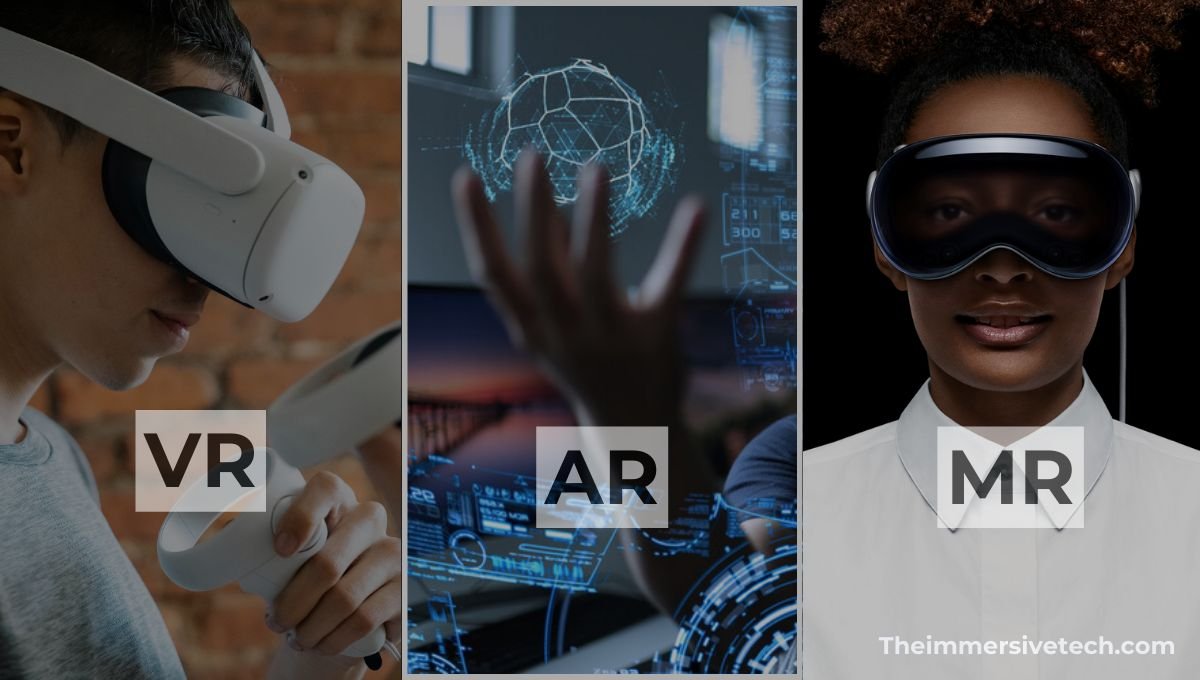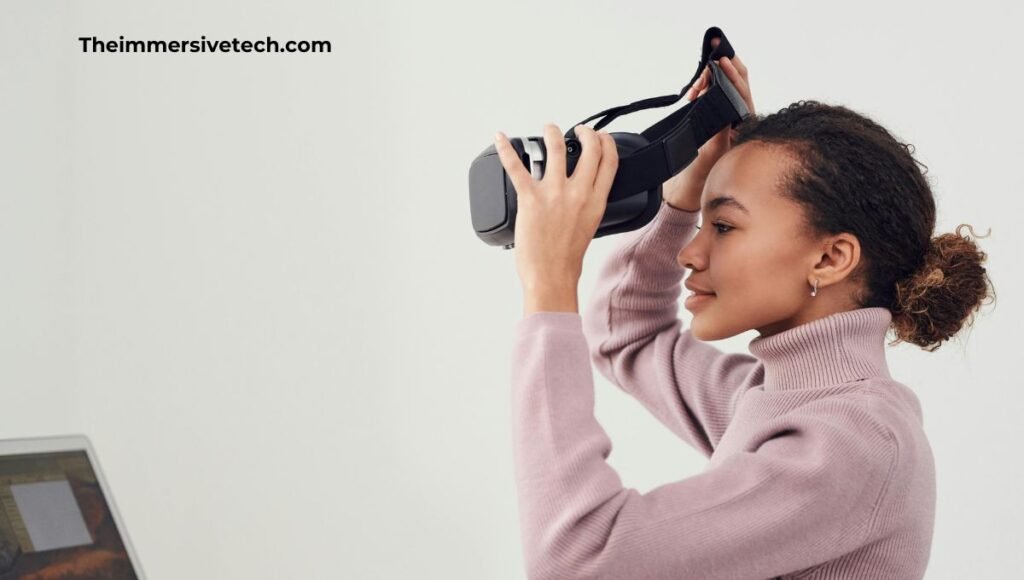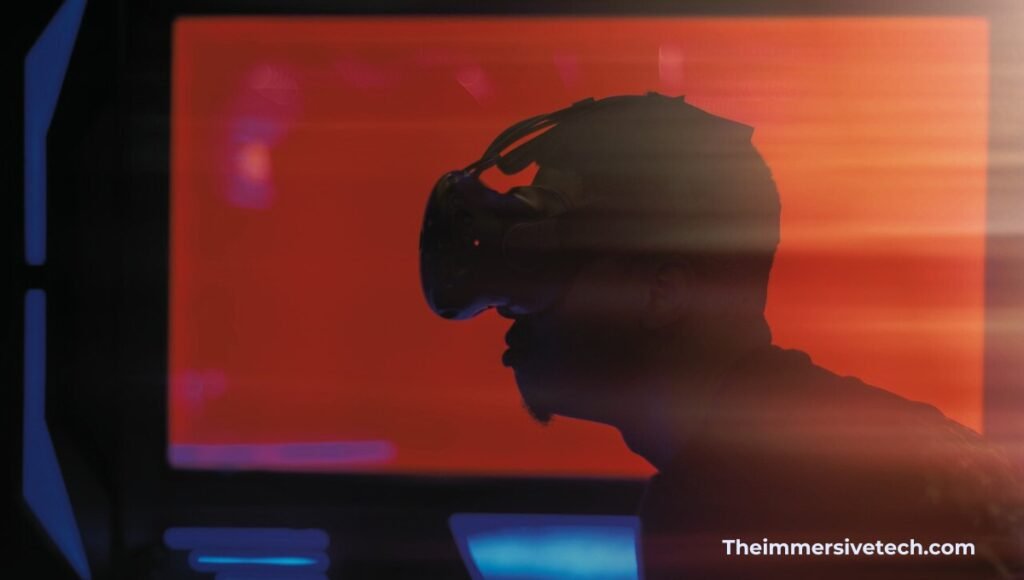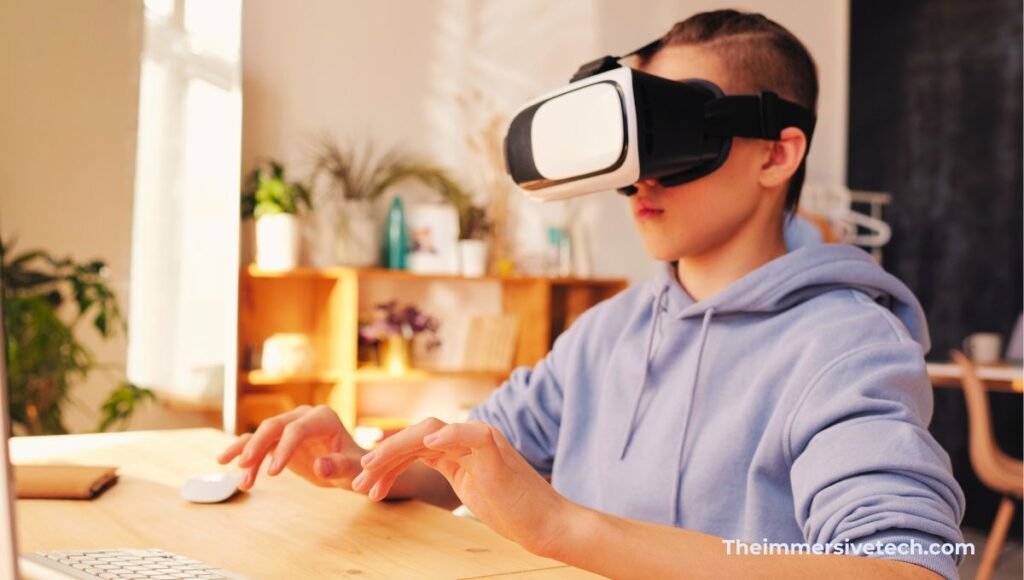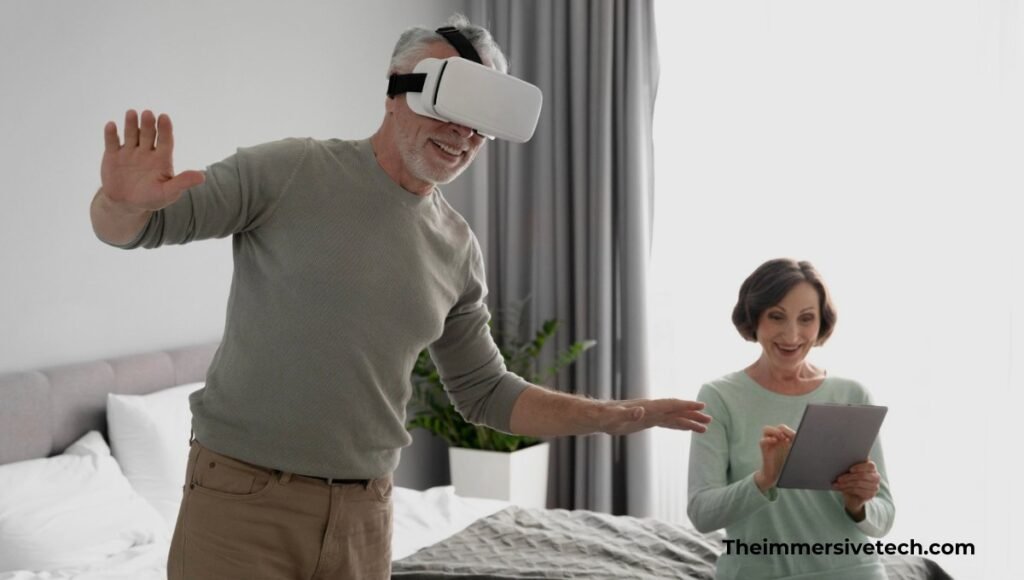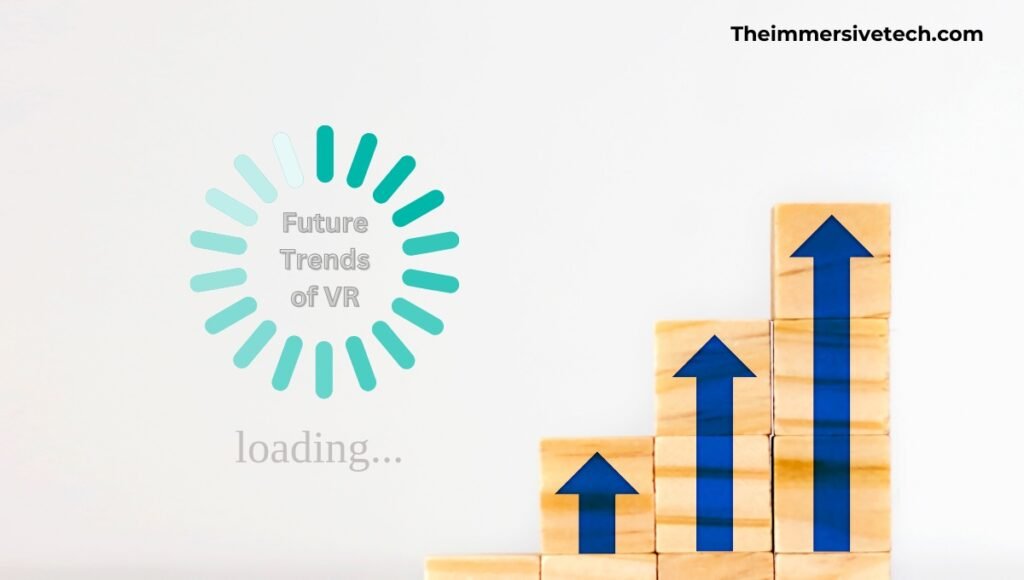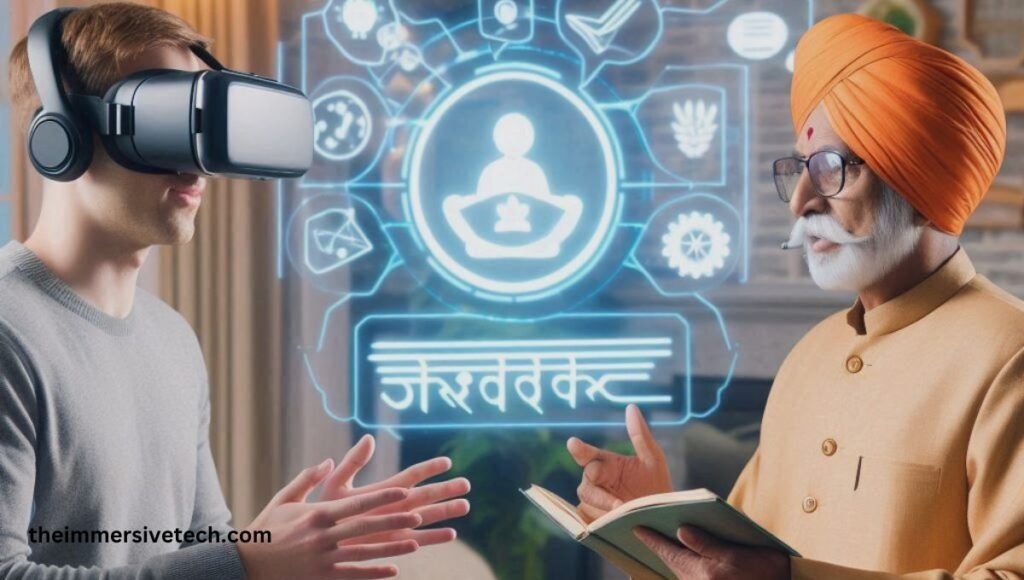Different types of reality technologies are gaining popularity at the moment. For instance, virtual reality, augmented reality, metaverse, etc. Let’s take a look at the latest advancements in the industry:
- Facebook (or Meta) has been working on virtual reality devices for years to bring them to a wider audience.
- Microsoft’s HoloLens is an example of how the company is using mixed reality.
- Apple’s ARKit framework allows iPhone and iPad users to experience augmented reality.
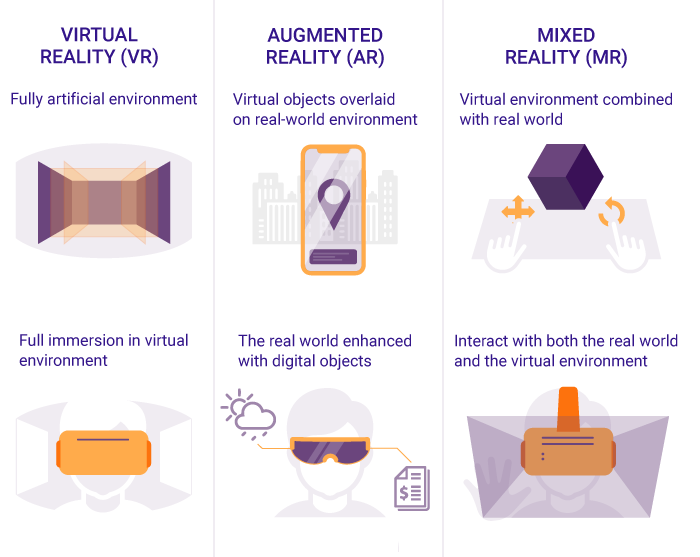
But to experience any of these realities, you would want to know about them first. In this article, we will explain the differences between each of these reality technologies: VR, AR, and MR. We will also share their real-life applications — so stick around!
Virtual Reality (VR)
Virtual reality, also known as VR, is an artificial, computer-generated environment that completely replaces the real-world environment. In a virtual environment, users can completely immerse themselves and perceive the digital world as if it’s real.
A person can experience virtual reality with special devices such as virtual reality headsets. The best part is that you can go wherever you want, or add anything extraordinary to your environment as it’s all digital!
For more, read the full introduction guide on virtual reality.
Two Types of VR Headsets
As said earlier, special headsets are used to immerse the users in a virtual environment. There are two types of VR headsets, depending on their quality and price range:
1. PC-connected Headsets:
PC-connected VR headsets are connected to a computer or gaming console that generates high-quality virtual experiences. Since modern computers have great processing power, they can generate realistic and immersive environments.
These headsets can also be used with special controllers that allow users to interact with the environment they’re in. Thus, PC-connected headsets provide one of the best virtual reality experiences.
Some of the popular PC-connected headsets are HTC Vive, Samsung Odyssey+, PlayStation VR, and Oculus Quest.
2. Standalone Headsets:
As their name suggests, standalone headsets don’t need a computer or gaming console. Since PC-connected headsets are quite expensive and not many people can afford them, standalone headsets allow people with a budget to experience virtual reality.
Most standalone headsets use a smartphone rather than a console to provide an immersive experience. So, users can simply insert their smartphones into the headset to immerse themselves. If you ask, Samsung Gear VR, Google Daydream, and Google Cardboard work exactly this way.
However, some standalone headsets such as Facebook’s Oculus Go work on their own. These headsets need neither a computer nor a smartphone to work and generate virtual experiences. Hence, making virtual reality accessible to people at an affordable budget.
Immersive Videos in VR
If you spend most of your time on YouTube, you are probably familiar with its ‘360-degree videos’ feature. Unlike conventional videos that have a limited field of view, 360-degree videos have a wide field of view that makes them immersive.
To experience these omnidirectional videos, users must wear virtual reality headsets to experience them to the fullest. For example, one can move their head to look around the live-action scene of a movie.
Real-Life Applications of VR
What’s the first thing that comes to your mind when you think of virtual reality? It’s probably movies or gaming. The reason behind this is the domination of the gaming industry in virtual reality. For example, you can connect your PlayStation VR headset to a PlayStation console and enjoy the games!
However, gaming isn’t the only industry that uses virtual reality. Here are a few of the real-life applications of virtual reality:
1. Education
Virtual reality can revolutionize how students learn and interact with their curriculum. This technology can make learning more immersive and engaging than ever before. For example, Unimersiv offers VR educational content for businesses and institutions — as you can see in the video below.
2. Healthcare
Virtual reality can help doctors have an in-depth look at human anatomy, allowing them to understand their patients’ needs better. Additionally, VR is also useful for surgery. For example, a platform by Medical Realities uses immersive, 360-degree videos and virtual anatomy to train future surgeons.
3. Marketing
Using VR, businesses can reach their target audiences with immersive and engaging marketing campaigns. Now that people can get a feel for products from the comfort of their homes, great marketing campaigns are more important than ever.
For example, IKEA created a virtual reality application that features a kitchen. People with a VR headset and controller can explore this virtual kitchen and even interact with it.
4. Travel
There’s a new thing going around the travel industry that’s called, “Go on a holiday before buying it”. It simply means that by using virtual reality, people can now enjoy a 5-minute view of the trip before deciding on it. These quick virtual tours are great for travel businesses as they promote destinations and attract tourists.
Take Google StreetView, for example. Users can view panoramic images on their computer, however, they can now experience a virtual tour as well via Google Cardboard.
Also read: Real Life Applications of Virtual Reality In different Industry
Augmented Reality (AR)
Many people confuse augmented reality with virtual reality. So, here’s a quick explanation of what augmented reality is: when you add digital elements to the real world. These virtual elements could be in any form: images, videos, or interactive data.
AR doesn’t immerse you into a virtual world. Instead, you bring the digital world to real life. For example, let’s say that you want to buy a chair. So, augmented reality can help you see how the chair would look in your room and choose the best one.
But how do you experience augmented reality? There are two ways:
1.Portable Devices
Augmented reality is much more accessible than virtual reality as people can use AR on their smartphones or tablets. It’s possible through augmented reality applications. In these apps, you need to capture an image of the real world; the virtual objects are then added to it and you can see it on your smartphone screen.
The best example that you can find for such applications is Pokemon Go. People can play the game on their smartphones and catch virtual Pokemon on their devices.
2. Smart glasses and AR headsets
Another way to experience augmented reality is through smart glasses and headsets. Unlike VR headsets that fully immerse the user into the virtual environment, AR headsets just add digital elements to the real world. Glass is one of the examples.
Applications of Augmented Reality
You might be thinking that like virtual reality, augmented reality also has to do a lot in the gaming industry. But no. Pokemon Go was a breakthrough in mobile games, however, augmented reality has a lot more to offer.
Let’s look at several industries that augmented reality has its prints on.
1. Advertising
Unlike conventional ads, AR ads are more engaging and interactive which makes promotions and sales easier, with increased brand recognition and awareness. Therefore, augmented reality helps marketers and advertisers reach their audiences efficiently.
2. Manufacturing
Augmented reality gives companies an edge by helping them with productivity and quality control. How so? Well, AR gadgets assist manufacturing workers which reduces human error, saves time, and increases efficiency.
Some of the world’s biggest corporations such as General Electric and Boeing are already using augmented reality in their manufacturing processes.
3. Retail
Online shopping has been here for years now; it’s convenient, time-saving, and money-saving. But what if you order an item that doesn’t look how you expected it to be when it arrives?
AR solves this problem in a snap, as the technology allows customers to virtually view or try on products before buying anything! IKEA Place is a great example.
4. Navigation
Augmented reality is extremely useful for navigation. It’s because virtual objects in the real world can show directions and guide people to new locations.
However, navigation through augmented reality is also useful to many businesses. For example, Yelp has a Monocle option that shows you the nearest cafes and restaurants.
Mixed Reality (MR)
Now that you know the difference between augmented reality and virtual reality, let’s take a look at mixed reality (MR).
Mixed reality (MR), also known as hybrid reality, combines virtual reality and augmented reality and hence, users can interact with and manipulate both virtual and physical elements in the real world. To put it together in simple words, mixed reality is a more immersive and interactive version of AR.
However, there can also be an immersive form of mixed reality: where you can interact with a complete virtual world. It’s similar to virtual reality, but not the same. Consider an example: Let’s say that you’re interacting with a complete digital environment in your room. Chances are, you might trip over a physical object. To prevent this from happening, a headset must track the real world and adjust the virtual environment to it.
Since there are two forms of mixed reality, there are two types of devices as well:
1. Holographic Devices:
These devices have translucent glasses that allow you to see your surroundings. Holograms create virtual experiences which are similar to augmented reality. Microsoft HoloLens 2 is an example of a holographic device.
2. Immersive Devices:
As the name suggests, these devices have non-translucent displays that completely block out the real world, creating an environment similar to virtual reality headsets. Thus, these create more of a virtual reality experience. To prevent any injuries, immersive devices use cameras for tracking. HP’s Windows mixed reality headsets work this way.
Industries MR May Be Useful To
Just like virtual reality and augmented reality have their uses in various industries, mixed reality also has its uses in three industries. Let’s have an in-depth look at these:
1. Communications
Mixed reality allows immersive conversations that help people collaborate more efficiently. For example, employees can put on their headsets and collaborate without being blocked by even a small pebble. This is exactly the way Skype for Microsoft HoloLens works:
2. Education
Just VR and AR are useful in the education sector, mixed reality comes in handy too. So, instead of blocking the real world, students can see through the holograms and stay aware of the real world with mixed reality. Hence, allowing students to understand concepts better. Mixed reality is useful for many purposes — from school education to medical training.
3. Manufacturing
In manufacturing, mixed reality becomes helpful by providing real-time assistance and instructions to the workers. Since workers can see the holographic instructions right in front of their eyes, they know what to do. This reduces human errors and improves quality to an extent. Mixed reality is also helpful for maintenance and repairs, especially in industries that require expertise and precision.
A Short Recap
Surely, your head is full of too much information right now. So, here’s a quick recap of what we’ve just learnt in this guide of VR vs. AR vs. MR.
- VR is a complete virtual environment that blocks out the real world.
- AR is a real-world environment with virtual objects overlapping it.
- MR is a combination of virtual reality and augmented reality. So, it’s a combination of the real-world environment and virtual objects that you can interact with.
All of these technologies are developing pretty quickly. Soon, we’ll be seeing them all around.

